Amazon Prime Streaming Issues
Amazon Prime Video has become a cornerstone of digital entertainment, offering a vast library of movies, TV shows, and exclusive content. Its appeal lies not just in the breadth of its offerings but also in the convenience it brings to millions of viewers around the world. However, despite its popularity, users occasionally face various Amazon Prime streaming issues that can dampen the overall viewing experience.
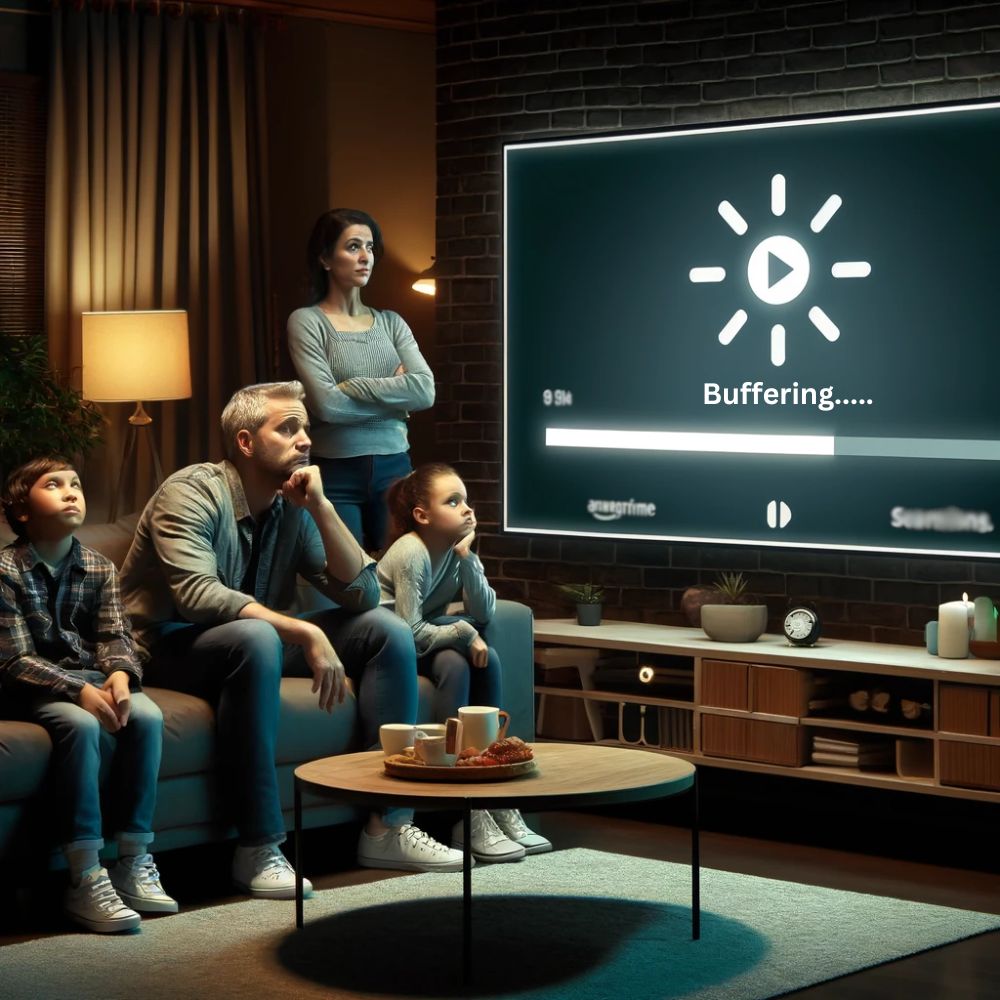
From intermittent Amazon streaming problems to persistent issues, these technical hiccups are more than mere annoyances. They can disrupt your movie nights, delay your binge-watching sessions, and interfere with catching up on your favorite series. Today, addressing these Amazon Prime streaming problems have become crucial, especially as the platform continues to grow and integrate more complex technologies and higher streaming qualities.
Recognizing and resolving these issues promptly ensures that users can enjoy a continuous and uninterrupted streaming experience. Whether it’s a sudden Amazon streaming problem or a recurring difficulty with buffering, understanding the root cause and knowing how to fix it not only enhances satisfaction but also solidifies user loyalty to the platform. As we dive deeper into common Amazon Prime streaming problems, it’s important to focus on maintaining the integrity of your streaming session and ensuring that your entertainment remains uninterrupted.
Understanding Amazon Prime Streaming Basics
Navigating the realm of streaming can often be as complex as it is entertaining. At its core, Amazon Prime Video operates on a straightforward principle: it allows users to stream a broad range of video content directly to their devices via an internet connection. This service, available to Amazon Prime subscribers, includes everything from superhit movies and TV shows to Amazon Originals. However, understanding the mechanics behind it can help alleviate some common Amazon Prime streaming problems.
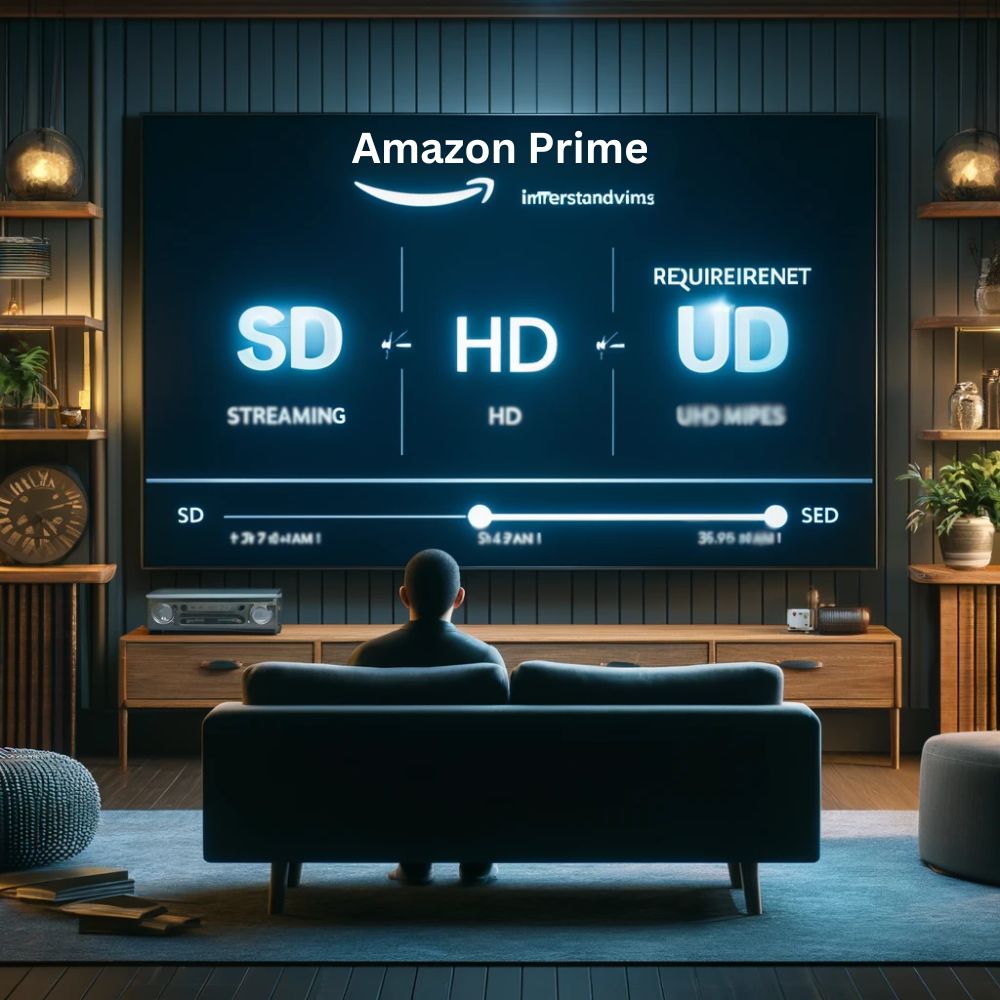
The quality of your viewing experience on Amazon Prime Video largely depends on your internet speed. For standard definition (SD) content, a minimum speed of 1 Mbps is typically sufficient, but this is the bare minimum and may not prevent Amazon streaming problems such as minor buffering. High definition (HD) content steps up the requirement to around 5 Mbps to stream smoothly. For the crispest image quality in ultra-high definition (UHD or 4K), speeds should ideally be at least 25 Mbps. Inadequate speeds can lead to Amazon Prime problems streaming, with frequent pauses that can disrupt your viewing pleasure.
As for devices, Amazon Prime Video is highly versatile, supporting a wide array of hardware. Most smart TVs, gaming consoles, smartphones, tablets, and dedicated streaming devices like Amazon Fire Stick are capable of streaming Amazon Prime Video. Each device might have its unique quirks that can lead to specific Amazon Prime streaming problems. For example, older models of smart TVs might struggle more with UHD content compared to newer models, which are better equipped to handle higher data and processing demands.
Understanding these basics—how Amazon Prime Video works, the internet speeds required for different video qualities, and the common devices used for streaming—can greatly enhance your experience and reduce Amazon Prime streaming issues. Keeping these elements in check ensures you get the benefits of your Amazon Prime Video subscription without the frustration of constant Amazon streaming problems.
Common Amazon Prime Streaming Issues
Explore the frequent Amazon streaming problems such as buffering on Amazon Prime, persistent error codes, and device compatibility problems. This section offers insights into why does Prime video keep buffering, how to resolve Amazon Prime streaming issues through error codes like 1060 and 7031, and steps to ensure your devices avoid streaming problems, enhancing your overall Amazon Prime viewing experience.
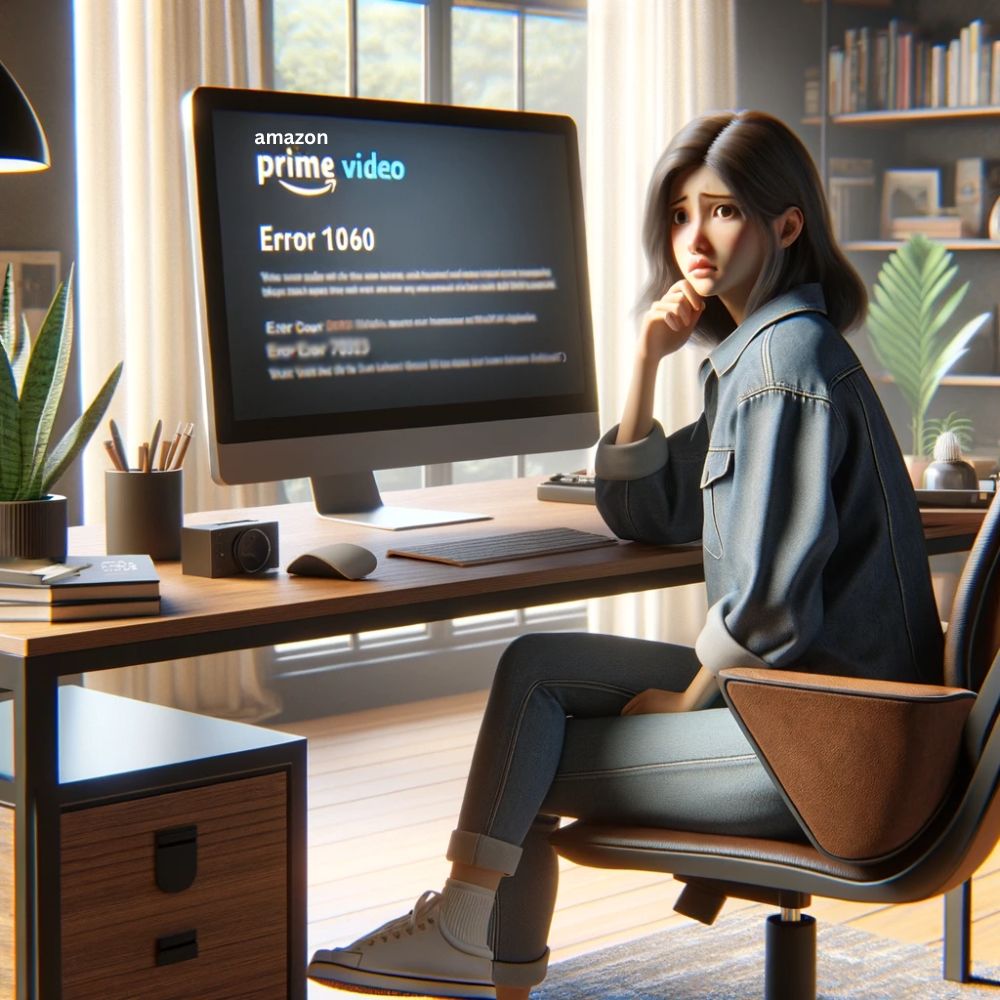
-
Amazon Prime Video Buffering and Slow Streaming
One of the most common frustrations for users is buffering on Amazon Prime. Buffering occurs when there isn’t enough downloaded data for the video to play smoothly, leading to interruptions that can ruin your viewing experience. Several factors can contribute to Amazon Prime video buffering, including slow internet speed, high traffic on your network, and problems with the streaming server.
-
-
Why does Amazon Prime keeps buffering?
-
Often, it’s due to inadequate internet speeds. Streaming high-definition (HD) content requires more bandwidth than many users realize. For instance, Amazon Prime slow streaming can be a significant issue if other devices on your network are consuming bandwidth simultaneously. This competition for bandwidth is a common reason that Prime video keeps buffering. If your Amazon prime stopped working due to persistent buffering issue, you can read our comprehensive blog on Amazon Prime Video Not Working and get your issue solved.
-
-
To improve Amazon Prime Video streaming quality and reduce buffering:
-
Enhance your Internet Connection:
Consider upgrading your internet plan if speeds are consistently below what’s needed for HD streaming.
-
Optimize your Home Network:
Use wired connections where possible, as they are usually faster and more stable than wireless ones. Also, try minimizing the number of devices connected to your network when streaming.
-
Adjust Amazon Stream Quality:
Lowering the video quality in your Amazon Prime settings can help reduce Amazon Prime streaming It’s especially useful if buffering on Amazon prime occurs during peak hours.
-
Clear Amazon App Cache:
Regularly clear your streaming device’s cache if Prime video keeps buffering. This can resolve issues with buffering on Amazon prime and improve overall performance.
-
-
-
Error Codes leading to Amazon Streaming Problem
Amazon Prime streaming issues often manifest in the form of error codes, which can be frustratingly cryptic. Common Amazon Prime error codes include 1060 and 7031, which generally indicate problems with your internet connection or Amazon’s servers.
-
-
To resolve these errors for Amazon:
-
Check Internet Connectivity:
Ensure your internet is active and stable. Rebooting your router can sometimes quickly fix this issue.
-
Restart Your Device:
Often, a simple restart of your streaming device can resolve prime video streaming issues related to error codes.
-
Update Amazon App:
Outdated applications can lead to Amazon streaming problems; ensuring your Amazon Prime Video app is up-to-date is crucial.
-
-
-
Device Compatibility Problems resulting in Buffering on Amazon Prime
Not all devices are created equal, and sometimes Amazon streaming problems arise from compatibility issues. Amazon Prime streaming issues can often be traced back to outdated hardware or software that isn’t fully compatible with Amazon Prime Video’s latest technology.
-
-
To check device compatibility and troubleshoot issues:
-
Check Amazon’s Supported Devices:
Amazon provides a list of supported devices on their website. Ensure your device is on this list.
-
Update Your Device:
Keeping your device’s firmware and the Prime Video app updated can solve many Amazon Prime streaming problems.
-
-
By understanding these common issues and how to address them, you can enhance your Amazon Prime Video experience, ensuring smoother, more enjoyable streaming.
Advanced Troubleshooting for Amazon Streaming Problem
This section tackles deeper solutions to Amazon streaming problems, focusing on optimizing internet connections and updating hardware, which are crucial for resolving problems like Amazon Prime Video keeps buffering on smart TV.
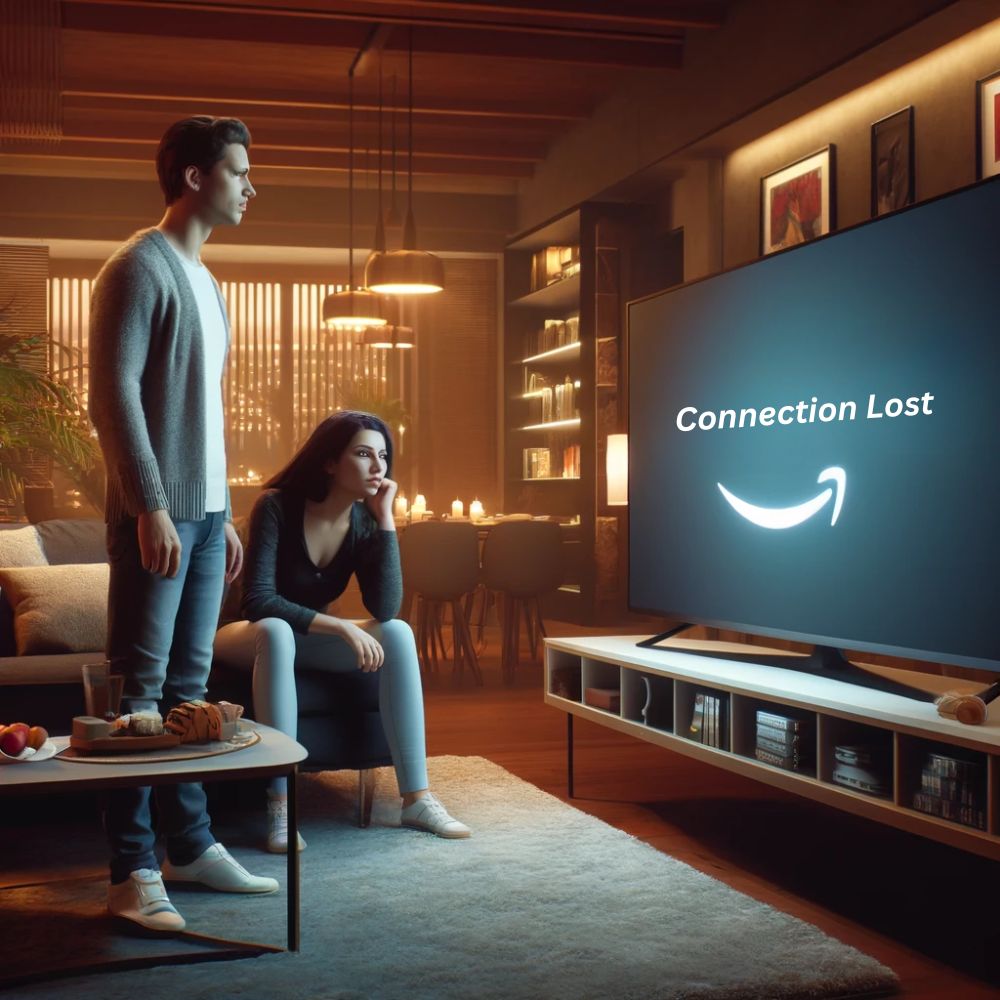
-
Internet Connection and Bandwidth Optimization for Amazon Prime Video
Effective management of your internet connection is the key to overcome Amazon Prime streaming issues:
-
-
Test Your Internet Speed:
Begin by using tools like Speedtest by Ookla to check if your internet speed is sufficient, as slow speeds are often behind buffering on Amazon prime.
-
Optimize Router Settings:
Adjust router settings to improve signal strength and minimize interference, which can help mitigate Amazon streaming problems.
-
Manage Bandwidth Usage:
Utilize router features like Quality of Service (QoS) to prioritize bandwidth for your streaming activities, addressing common Amazon Prime streaming issues caused by bandwidth congestion.
-
Upgrade Internet Service:
If Amazon streaming problems persist, upgrading your internet plan may be necessary to ensure higher speeds and better streaming performance.
-
-
Software and Hardware Solutions for Amazon Streaming Problem
Maintaining updated software and robust hardware is essential to avoid Amazon streaming problems:
-
-
Regular Software Updates:
Regularly updating your Amazon Prime app and device firmware can prevent many Amazon prime streaming issues, like the issue of Prime Video keeps buffering.
-
Consider Hardware Upgrades:
Older devices may not handle high-quality streams well, leading to frequent Amazon Prime streaming problems. Upgrading your streaming device or smart TV might be necessary for a smoother streaming experience.
-
Enhance with Accessories:
Investing in high-quality streaming accessories, like advanced HDMI cables or superior Wi-Fi adapters, can also help reduce Amazon streaming problems and enhance your viewing experience.
-
By adopting these advanced troubleshooting techniques, you can significantly reduce Amazon Prime streaming problems such as Amazon Prime Video keeps buffering on smart TV, ensuring a more reliable and enjoyable streaming experience on Amazon Prime Video.
Enhancing Your Amazon Prime Video Experience
Maximizing the quality and versatility of your Amazon Prime Video experience can transform how you enjoy your favorite shows and movies. This section provides essential tips and recommendations to leverage Amazon Prime features effectively and address common Amazon Prime streaming issues.
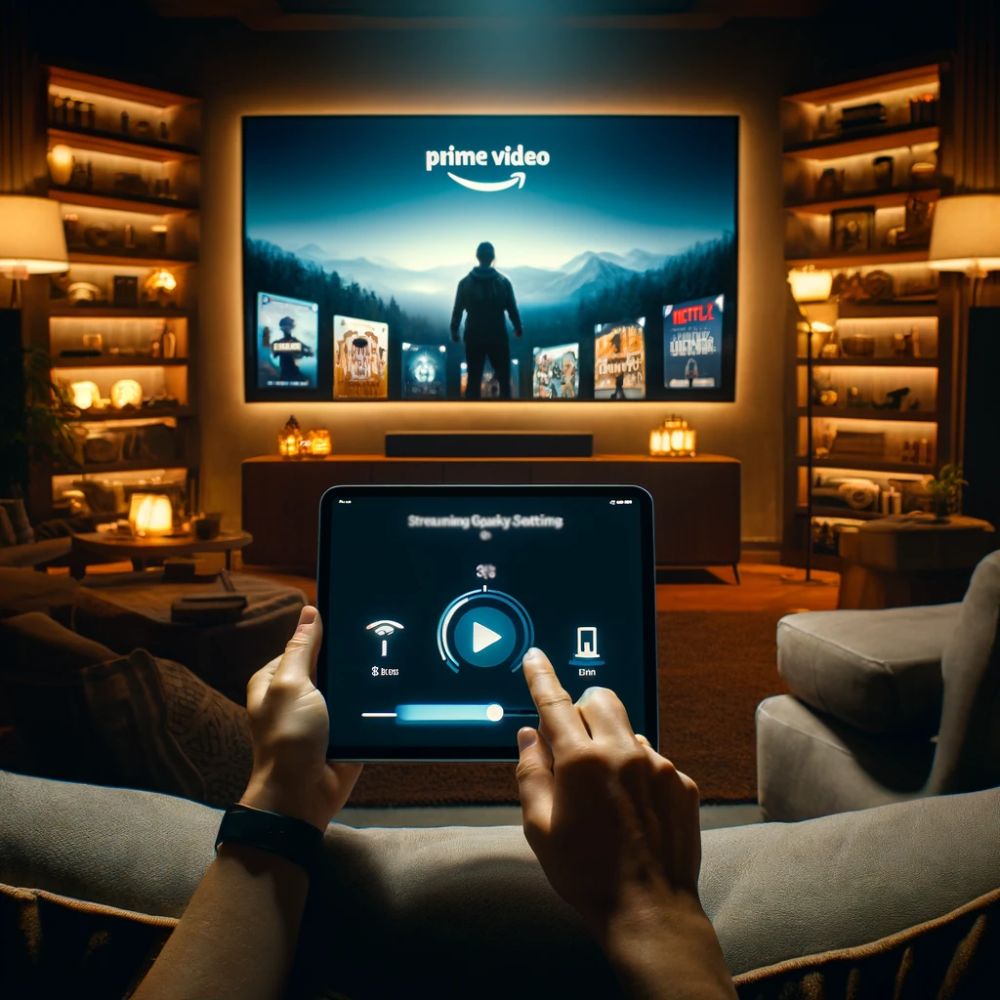
-
Optimizing Amazon Prime Video Streaming Quality
Enhancing your Prime Video streaming quality begins with understanding and utilizing Amazon Prime Video’s built-in features:
-
-
Adjust Video Quality Settings of Amazon Prime:
To cope with Amazon streaming problems such as buffering, Amazon Prime Video allows you to adjust the streaming quality. Lowering the video quality can improve streaming smoothness when your internet connection is weak, addressing Amazon Prime problems streaming content in high definition.
-
Download for Offline Viewing:
One of the most useful features of Amazon Prime Video is the capacity to download movies and TV shows for offline viewing. This eliminates Amazon Prime streaming issues related to poor internet connectivity, ensuring you can enjoy your content without interruption.
-
Smart Data Saver:
This feature optimizes data usage without significantly compromising video quality, which is particularly useful when streaming on mobile networks. It’s an effective solution to minimize Amazon streaming problems while on the go.
-
-
Using VPNs for Enhanced Access and Security for Amazon Prime Video
Geo-restrictions can limit the content available to you based on your location, leading to potential Amazon Prime streaming problems:
-
-
VPN for Accessing Geo-Restricted Content:
A reliable VPN can help you bypass geo-restrictions, expanding your content library significantly. By connecting to servers in other countries, you can access shows and movies not available in your region, thus enhancing your Prime Video streaming quality.
-
VPN for Resolving Streaming Issues:
Sometimes, Amazon Prime streaming issues can be linked to ISP throttling. A VPN can mask your streaming activities, preventing your ISP from throttling your bandwidth, thereby maintaining consistent streaming quality.
-
Choosing the Right VPN:
Select a VPN that is known for its speed, stability, and security features. Look for VPNs that specifically state they work with streaming services like Amazon Prime Video to avoid potential compatibility issues.
-
By utilizing these strategies, you can enhance your viewing experience on Amazon Prime Video, ensuring higher Prime Video streaming quality and fewer Amazon Prime streaming problems. Whether adjusting your settings for optimal playback, downloading content for offline use, or using a VPN to access a broader range of shows and movies, these tips will help you get the most out of your Amazon Prime subscription.
Preventive Measures to Avoid Buffering on Amazon Prime
To ensure a seamless viewing experience on Amazon Prime Video and mitigate common Amazon streaming problems, adopting proactive measures and best practices is crucial. This section covers routine checks and settings adjustments that can help prevent trouble streaming Amazon Prime and ensure smooth playback across multiple devices.
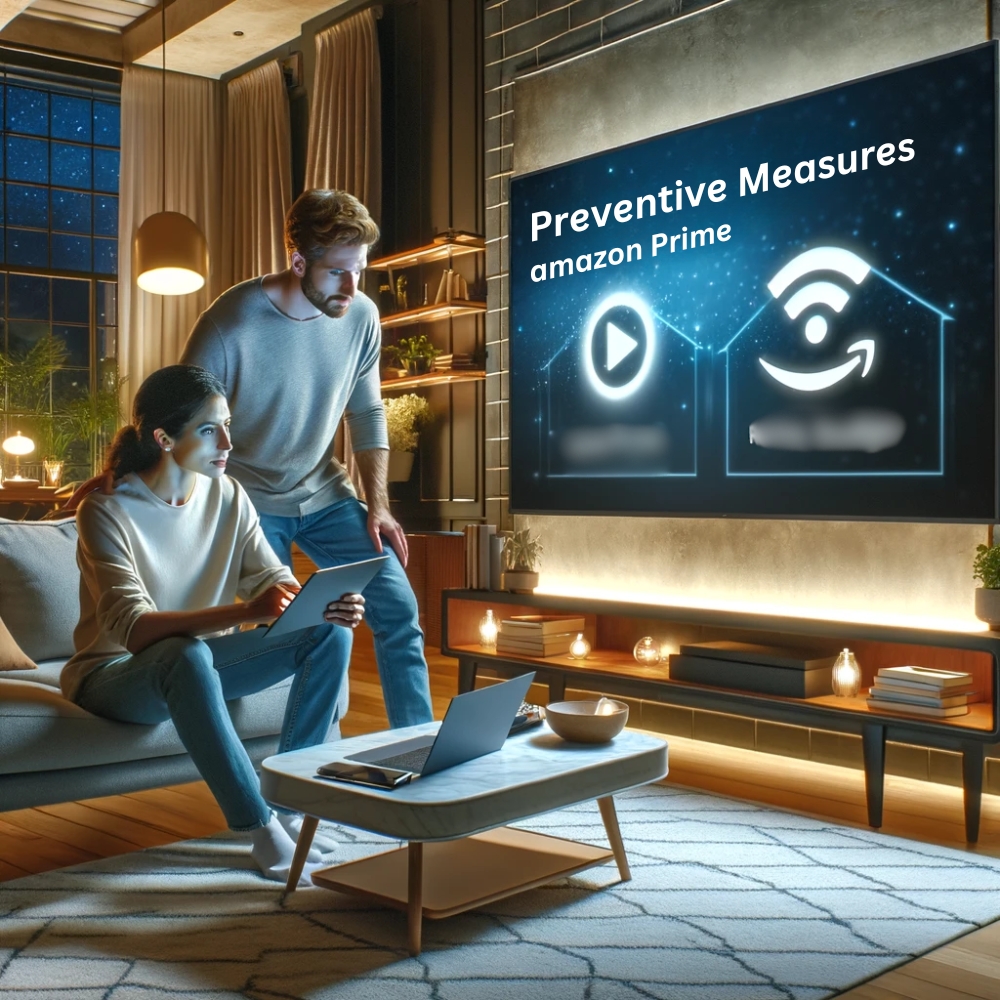
-
Routine Checks and Settings Adjustments
Regular maintenance of your streaming setup can significantly reduce trouble with Amazon Prime streaming:
-
-
Check Internet Speed Regularly:
Consistently monitor your internet speed to make sure it fulfills the requirements for streaming high-quality video. Slow speeds are often the root cause of Amazon streaming problems.
-
Regularly Update Amazon Prime Apps and Devices:
Keeping your Amazon Prime Video app and any associated devices up to date is crucial. Updates often have bug fixes and enhancements that can avoid trouble with Amazon Prime streaming.
-
Adjust Streaming Settings of Amazon Prime:
Based on your current internet speed, adjust the streaming quality settings within the Amazon Prime Video app. Lowering the quality can help avoid trouble with Amazon Prime streaming during peak internet usage times.
-
Clear Cache and Data of Amazon Prime:
Over time, cache and data buildup can affect app performance, leading to Amazon streaming problems. Regularly clear the cache and data of your streaming app to maintain its efficiency.
-
-
Best Practices for Seamless Streaming of Amazon Prime on Multiple Devices
Enjoying Amazon Prime Video across various devices requires a streamlined approach to manage settings and connectivity:
-
-
Device-Specific Adjustments:
Tailor the settings on each device according to its capabilities and connection strengths to minimize Amazon streaming problems.
-
Consistent Network Settings:
Ensure that all devices are connected to the same network and receiving optimal signal strength. Poor network configuration can lead to trouble with Amazon Prime streaming.
-
Synchronize Updates:
When using multiple devices, synchronize updates across all platforms to avoid compatibility issues, which can contribute to Amazon Prime streaming issues.
-
Use Authorized Devices:
Ensure that all devices used for streaming are authorized and supported by Amazon Prime Video. Unauthorized or unsupported devices often face more frequent streaming issues.
-
By applying these preventive measures and best practices, you can enhance your Amazon Prime Video experience, reducing the likelihood of encountering Amazon streaming problems. These steps help ensure that whether you are watching on a smart TV, tablet, or smartphone, your streaming experience remains high-quality and uninterrupted, effectively minimizing any trouble with Amazon Prime streaming.
FAQs
Q. Why does Prime Video keeps buffering?
- A. If Prime Video keeps buffering, it might be due to poor internet speeds or high network traffic. Ensuring that your internet connection meets the bandwidth requirements for streaming can help reduce buffering on Amazon Prime.
Q. What can I do about Amazon Prime video streaming issues today?
- A. For Amazon Prime streaming issues, check your network connection and device settings. Sometimes, simply restarting your device or router can resolve temporary Amazon streaming problems.
Q. How can I resolve Amazon Prime slow streaming?
- A. To fix Amazon Prime slow streaming, try lowering the video quality settings on your Amazon Prime Video app or improving your Wi-Fi signal strength to address the Amazon Prime buffering issues.
Q. Why does my Amazon Prime keeps buffering even with good internet speed?
- A. If Amazon Prime keeps buffering despite a good internet connection, it could be due to server issues from Amazon’s end or too many devices connected to your network. Reducing device load can help alleviate this type of Amazon streaming problem.
Q. What steps can I take if I have trouble streaming Amazon Prime on multiple devices?
- A. If you’re having trouble streaming Amazon Prime on multiple devices, ensure each device has its streaming quality settings adjusted appropriately. This can help manage bandwidth and minimize Amazon Prime streaming issues.
Q. How do I fix error codes related to Amazon Prime streaming problems?
- A. Error codes related to Amazon Prime streaming problems often indicate connectivity problems. Check your internet connection, restart your device, or update the Amazon Prime Video app to resolve these prime video streaming issues.
Q. Can using a VPN improve my Amazon Prime streaming quality?
- A. Yes, a VPN can help improve Prime Video streaming quality by bypassing ISP throttling and allowing access to geo-restricted content. However, ensure the VPN is compatible with Amazon Prime Video to avoid additional Amazon streaming problems.
Q. Why does Amazon Prime Video keeps buffering on my smart TV?
- A. If Amazon Prime Video keeps buffering on your smart TV, it might be due to outdated hardware or insufficient processing power of the TV. Consider updating your TV’s firmware or using a streaming device to enhance the prime video streaming quality.
Q. How can I prevent future Amazon Prime streaming issues?
- A. Regularly updating your apps and devices, checking internet speeds, and managing network bandwidth can prevent many Amazon Prime streaming issues. Consistent maintenance ensures you experience less trouble with Amazon Prime streaming.
Conclusion
In this blog, we’ve explored a variety of methods to troubleshoot and resolve Amazon Prime streaming issues. From simple fixes like adjusting your internet settings to more complex solutions involving hardware upgrades, each strategy plays an important role in enhancing your streaming experience. The importance of addressing Amazon streaming problems cannot be overstated, as these can significantly impact your enjoyment and satisfaction with one of the world’s leading entertainment services.
Persistent problems such as Amazon Prime video keeps buffering can disrupt your viewing pleasure, turning what should be a relaxing activity into a frustrating ordeal. By implementing the tips and solutions discussed, you can expect a noticeable improvement in your streaming quality. Whether it’s optimizing your internet connection, updating your devices, or using a VPN, each step you take moves you closer to a seamless streaming experience.
We also understand that every user’s experience is unique, and what works for one might not work for another. This is why we encourage you to not only apply these solutions but also to share your experiences in the comments. If you’ve found alternative methods to overcome trouble with Amazon Prime streaming, your insights could be invaluable to other readers facing similar issues.
In conclusion, by being proactive and using the recommended practices, you can significantly reduce the occurrence of Amazon Prime video streaming issues. So, try out these strategies and enjoy your enhanced viewing experience. Your contributions can help create a better streaming environment for all Amazon Prime Video users.
To know more about Amazon Prime Streaming Issues and other problems, visit our Amazon Prime Video Support Page.


Susan green
Despite having a high-speed internet connection, I frequently encounter buffering on Prime Video. What factors could be causing this issue, and how can I address them to ensure smoother streaming?
Support Admin
Buffering on Prime Video, despite a robust internet connection, can be influenced by several factors. Network congestion is a common culprit, particularly during peak hours when many users are online. Interference from other devices on your network could also be reducing the bandwidth available for streaming. To improve your situation, consider prioritizing your streaming traffic via Quality of Service (QoS) settings on your router. Also, ensure that both your Amazon Prime Video app and your streaming device’s firmware are up-to-date to prevent compatibility issues that could be exacerbating the buffering on Amazon Prime.